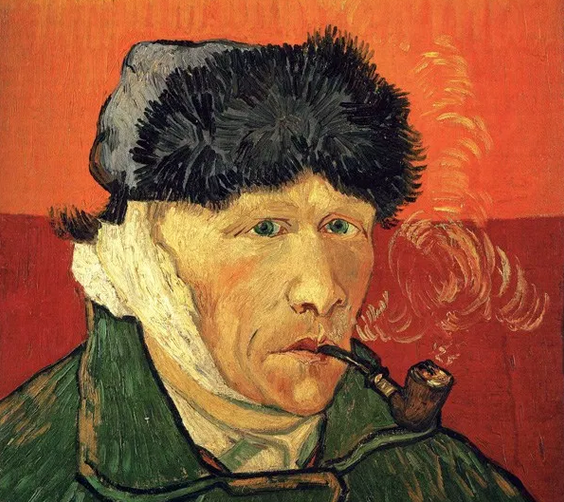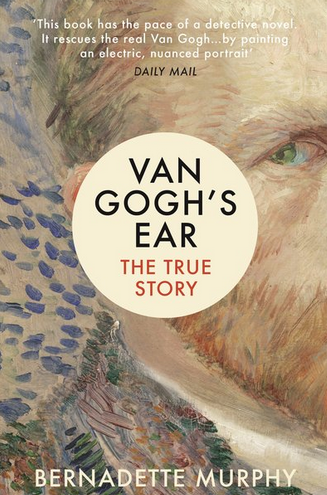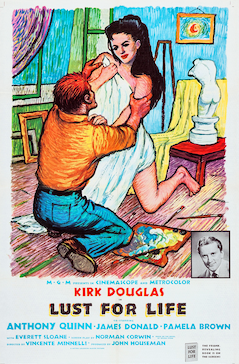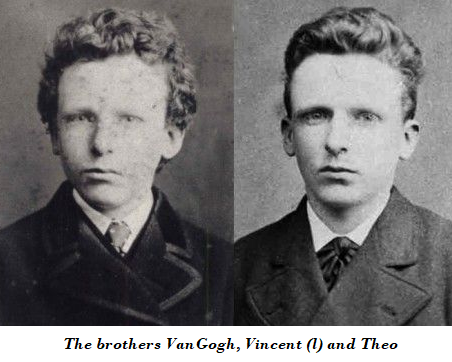
During the heady political days of 1968, at a warren of a student house in Sydney’s then ungentrified Glebe, a young artist moved in, making the seventh of us living communally. He was nineteen years old and my best memory of him would say he was sunny. His happy nature shone. His room was a tiny one, off a landing on the stairs, his window looking down on the overgrown yard. On the small patch of grass there our group household, with our two mandatory cats, would sit drinking wine and occasionally testing out hallucinogens. In that fine crumbling old house I would arrange flowers, as the song says, in a recently purchased op-shop vase on the dining table which I had painted electric pink in this springtime of our lives.
This review appears in October’s Quadrant.
Click here to subscribe
The original six of us were at Sydney University, whereas the newcomer studied at the Julian Ashton Art School, famed for its old-style approach to drawing. Students there learned to draw first, before tackling oil painting, and they practised drawing by sketching plaster models of human body parts: skulls, hands, feet and even ears.
We were all amused one day when our friend brought home some plaster pieces no longer required at the art school. On a shelf, beside the model of a human ear, this personable young man had written “Vincent’s Left-Overs”, sitting as it did underneath a van Gogh print of a small room furnished only with a single bed and chair. On the wall opposite he had put up a print of van Gogh sunflowers, for he was clearly living the life. A year later, this sunny young man was dead, victim of a sudden and rare disease.
 This memory came vividly and sadly to mind for me recently when my husband, fond of Impressionist painting, brought home an obviously popular book still current on the “staff pick” shelves of the bookshop. He thought, he added subtly, that I might enjoy it too, because it was written by a woman of a certain age who developed an accidental interest which was to become something of an obsession with her for some years; just as reinterpreting King Arthur (see Quadrant, September 2018, ‘Decoding King Arthur and the Grail‘) had become for me, he implied.
This memory came vividly and sadly to mind for me recently when my husband, fond of Impressionist painting, brought home an obviously popular book still current on the “staff pick” shelves of the bookshop. He thought, he added subtly, that I might enjoy it too, because it was written by a woman of a certain age who developed an accidental interest which was to become something of an obsession with her for some years; just as reinterpreting King Arthur (see Quadrant, September 2018, ‘Decoding King Arthur and the Grail‘) had become for me, he implied.
The book’s title simply consisted of the famous meme alluded to so long ago by my sunny friend: Van Gogh’s Ear. As a title it sufficed, for everyone knew the story already: on Christmas Eve 1888 during a fit of madness, while living in Arles in Provence in the south of France, an Impressionist painter who signed himself simply as Vincent, briefly sharing his lodgings with a fellow Impressionist painter called Gauguin, had cut off his ear and presented it wrapped as a present to a local prostitute. Less than two and a half years later, Vincent van Gogh had long left Arles and had committed suicide in the Auvers-sur-Oise region of Paris. The book’s subtitle, though, suggested something else, for it promised The True Story.
Bernadette Murphy is an English woman with a degree in Art History who had never published before on van Gogh. She says she had found the tea-towel and fridge-magnet souveniring of his works and the tourist tours of Arles somewhat off-putting for her appreciation of his greatness. Tourists came for the legend, but many of the sites, including that of the Yellow House where van Gogh lived, had been obliterated by German bombing (below) during the Second World War. Only later in her book, as she came to “know” Vincent well, does she admit to the emotional impact his paintings could have upon her, pointing out how very innovative his work was, how his use of vibrant colour showed in painting a world previously only seen in nature, something often forgotten in the colour-saturated world of today.

Bernadette (if I may) had escaped academia thirty years before to live and work permanently in Arles, and knew the area and its culture well. Mildly at a loose end, and as this famous self-mutilation had put Arles on the tourist map, she decided to investigate “that fateful day”. She revisited Vincent’s paintings in her art books and his story as told online by the Van Gogh Museum in Amsterdam, where she noted that according to this reliable source Vincent had actually cut off only a part of his left ear, not the whole thing. So why, she wondered, had the whole ear been assumed in various biographies and tales? Not only this, as she investigated more thoroughly what was known of Vincent’s life in Arles, a number of other small discrepancies began to emerge, and on went her detective hat.
With extraordinary thoroughness and meticulous care, she took on the case as a forensic one, looking only for discrepancies and documented evidence for and against certain positions taken as fact in the narrative about van Gogh in Arles. “Evidence” was her catchcry, made all the more difficult by the bombing, which had destroyed certain records and made reconstruction of the town plan quite oblique at first as she checked who went where and when during the emergency and before and after it. Luckily, she was a trained researcher. As a long-term resident she was also more able than most outsiders to fight her way through the complex French bureaucracies that held the documents she sought: and she sought so many, in Arles and elsewhere.
She searched avenues no one else had bothered to examine, compiling merely as a start a full list of all residents of Arles during van Gogh’s time, identifying a number of those who were in his many paintings, immersing herself in the manners and viewpoints of the time to better comprehend why some locals petitioned for Vincent’s removal after his illness and others did not. She forensically examined the petition and found some spurious names in the thirty signatures. In doing so, she has managed to diminish the bad reputation Arles had gained as a heartless place trying to evict Vincent as a nuisance.
Contrary to what previously had been thought, Murphy showed that the town was not particularly against  Vincent, that those few who opposed his presence had a financial interest in his departure, and that he was by no means always the madman of later characterisations. Especially significant in producing the popular account was a lurid 1930s novel by Irving Stone called Lust for Life, which was later made into a similarly lurid 1956 film starring Kirk Douglas. This cemented the legend of van Gogh’s absinthe-induced madness which Murphy was proceeding to demolish.
Vincent, that those few who opposed his presence had a financial interest in his departure, and that he was by no means always the madman of later characterisations. Especially significant in producing the popular account was a lurid 1930s novel by Irving Stone called Lust for Life, which was later made into a similarly lurid 1956 film starring Kirk Douglas. This cemented the legend of van Gogh’s absinthe-induced madness which Murphy was proceeding to demolish.
Her investigations found Vincent could even be quite liked and his work respected by some of the townspeople who knew him and that absinthe was rarely sold in Arles. She looked at postal deliveries (four a day!) and train timetables and weather reports to challenge differing accounts or minor things unremarked. She chased up the few newspaper accounts of the self-mutilation, found the police investigation reports, and what she could of the hospital documentation, relying mostly there on written depictions of the institution and two of Vincent’s paintings.
She read all of the correspondence, luckily available online, and without earlier redactions, between Vincent and others, especially those with his emotionally co-dependent brother Theo, an art dealer. Theo sold Vincent’s paintings and supported him for his talent and out of love in spite of, or perhaps because of, Vincent’s already recognised bouts of mental illness interspersed with periods of normality. Tackling the various biographers, Murphy showed that there was selective bias in the parts of the letters used and the parts ignored.
A reviewer in The Guardian of this BBC Book of the Week quipped that Murphy’s basic query and her international search for documentation could be characterised as “lobe-trotting”—did just the lobe or the whole ear come off? And with a knife or a cut-throat razor? It is a fascinating issue, for ear-taking is part of the atavism in European culture. Bullfighters offer the ear of their killed bull to their lover in the stand, we make a silk purse out of a sow’s ear, soldiers have “souvenired” ears from defeated foes and kidnappers have severed an ear from a victim to impel payment. In the end the solution to Vincent’s severing was found to have travelled to California. Hidden away in an old box was a medical drawing of the actual wound, and I won’t spoil the story by telling you the result here. Nor will I tell you who, due to Murphy’s diligent research, the mysterious “prostitute” named “Rachel” turned out to be, verified by her local descendants, nor why she was the recipient of this grisly (and perhaps gristly?) present.
But I can summarise for you that the explanation Murphy offers for the wrapped package and why van Gogh mutilated his ear and sent the result to “Rachel”, while speculative, is well supported by Murphy’s decoding of a series of word-clues about Vincent’s mental condition which were jotted down on the actual night by Gauguin, a key participant, as events unfolded. Her explanation depends on her evidence that van Gogh was a compassionate and considerate person, driven to establish an atelier, an artists’ colony, in Arles, and that his failure to do this was a deep disappointment to him. Bewildered by his illness, as Murphy shows, he projected it onto others in an attempt to diminish its significance. She makes much play too about van Gogh’s earlier religiosity (he’d trained as a pastor), which she suggests likely turned him to experience a Christ-like compassion during a heightened schizoid episode brought on by Gauguin’s desire to leave Arles. The result of this was for Vincent to self-mutilate to prove his worth by providing a healing gift from his own body.
A PBX documentary on Bernadette Murphy and her search and other reviews online will act as spoilers for those who can’t wait for the big reveal or don’t want to read the book itself. What I will say is that this book shows that no one should ever place too much faith in a meme until the back-story has been thoroughly examined. Murphy makes a good claim that Vincent was not hooked on absinthe, that he probably was not an alcoholic, and that he may have been suffering from a form of bromide poisoning, inducing his delusions and visions, given his genetic susceptibility to them. Her research established the unrecognised fact that he had been treated with bromide for years due to the general diagnosis of “epilepsy” that was made in this period for a wide range of mental illnesses. Her discussion of his mental illness and its well-meant treatment in the local hospital can bring you to tears. There is still no agreement as to what particular mental illness plagued him.
There are still medical conferences about just that, where Murphy is invited as a contributory guest, so sensitive is her appraisal of Vincent’s history of breakdowns. As I have found in my own lineal family and collateral relatives, there is no joy in this field, even now with improved medications and diagnostics. Murphy’s Chapter 10, “Troubled Genes”, which investigates van Gogh’s family background, demonstrates recurrent instances of mental instability among his close relatives down the generations; even level-headed Theo suicided only a few years after Vincent. This familial finding suggests what seems scientifically to be increasingly the case: there is a physiological genetic base to such things. However, the caution is that circumstances can also be relevant, as to any overt expression of disorders. Thanks to Murphy’s new appraisal we now have a more nuanced view of the stressors placed upon Vincent van Gogh.

Although leavened by some van Gogh illustrations in colour, there are 253 pages of dense but highly readable argumentation in this book, and fifty-five pages of chapter reference notes. Some readers may find this daunting, as the referencing is of PhD quality, albeit unobtrusively done with tiny numbering. Online reader reviews are mixed, some saying “too much information”, and advocating a more summarising approach; “dogged” is a term also used for Murphy’s dedicated persistence. Apparently it is a slow read for some and a well-paced detective story for others. One crucifyingly unfair comment washes away Murphy’s informative and lively style as “workaday”. Many others, the majority I suspect, simply love the whole thing, mentioning especially the authorial insertion of her personal process of discovery. When you are trying to combine a story of detection and interpretation with a need to produce the evidential goods, it seems inevitable that some will say, as one reader did, Why didn’t she just write a novel about her new findings? Such readers need to go off and find another book, not this one.
Give it the time, though, and you will get the rewards. Bernadette Murphy has love enough of Provence to make Vincent’s yellow sunflowers in skies as blue and wide as Australia’s recall for me a young man’s sunny nature, and skill enough to let me find in Vincent’s swirling starry night a memory of them both.
Elizabeth Beare wrote of her travels in the early days of the COVID-19 outbreak in the June issue.
Van Gogh’s Ear: The True Story
by Bernadette Murphy
Vintage Press, 2017, 336 pages, $24.99
 Sign In
Sign In 0 Items (
0 Items ( Search
Search










Thank you, Ian. What this book does in particular is to demonstrate how new light can be thrown on what may seem a ‘settled’ issue when an ‘independent researcher’ takes the time and makes the effort to pursue an investigation. Good and useful humanities research does not necessarily need a lot of Arts funding support and a team of players; one dogged person with a little time to spare can do a lot alone.
A great story about a great painter whose works I have always admired and seen them in galleries in Europe and when the exhibition came to Australia. I have also been interested in his health issues and found this article very enlightening. It was my understanding that he and fellow artists of the time when he was in Paris were not all that well off and used to drink absinthe which was cheaper than other alcoholic beverages and spirituous liquors. So I checked out various sources of information on absinthe and came across the following monograph that appeared in the 1907 and 1923 copies of the British Pharmacopoeia Codex:
Absinthium (Synonym –Wormwood) consists of the dried leaves and flowering tops of Artemisia Absinthium … The chief constituent of wormwood is a volatile oil, of which the herb yields from 0.5 to 1..0 per cent.
Actions and Uses – The most characteristic action of absinthium is stimulation of the cerebral hemispheres. It first produces symptoms like those of camphor, followed in much larger doses by convulsions exactly resembling those of an epileptic fit. It was formerly an ingredient of various vinous preparations, of which absinthe is the present representative. Those addicted to the use of absinthe fall into a condition known as absinthism. This is shown by restlessness, vomiting, vertigo, tremors and epileptiform convulsions in which the patient loses consciousness, falls down, has clonic convulsions, and may bite his tongue, pass water, and foam at the mouth. This drug is rarely employed, but it might be of value in nervous diseases such as neurasthenia, or in any condition in which a direct stimulation of the cortex cerebri is desirable.
If it is true that he was drinking absinthe regularly in Paris it is likely that he became addicted and suffered permanent brain damage and having realised that, did not continue taking absinthe when he got to Arles, as Murphy has rightly researched. She is on the right track with bromide poisoning, though. Regular ingestion of bromides leads to a condition called “bromism” which manifests in changes to the skin and can cause severe mental health effects. Bromazepam, a drug for anxiety, and still used today can also cause bromism. My grandmother accidentally got bromism from Relaxa Tabs in the late 50s. These tablets contained two bromide compounds – carbromal and bromvaletone which were found to be a cause of bromism and consequent mental issues and were eventually banned. After getting off them she recovered. In Vincent’s days and up to the early 60s doctors prescribed potassium bromide in mixture form to treat what people used to call “nerves” (“Me nerves are playing up” was a common post-war expression I used to hear as a child from older people). So it looks like from Murphy’s research that if Vincent was being treated a commonly prescribed bromide mixture from the local Aries pharmacie he would have been getting a double whammy – firstly from the permanent brain damage that does not go away when he ceases absinthe and then getting and maintaining bromism from the regular use of bromide to treat the mental health issues caused by the previous use of absinthe. This meant that the bromism was maintaining his mental health issues. The science of drugs in those days was not very advanced, for example, in my research I noticed that after Marie Curie had published her work on uranium it was introduced into mainstream medicine as a cure for diabetes by injection. Obviously, that therapy did not last long as the patients died from radiation poisoning. To be sure that he was taking a bromide Murphy may like to check to see if the pharmacies in Arles still have their old records of what they dispensed for him at the time.